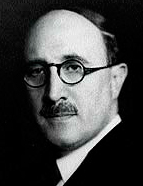

CSA's vast body of work is characterised by high-quality writing that reveals his skill as an excellent "storyteller". It spans a variety of themes across a relatively broad chronological range, largely because, drawing on his research into the medieval period, he developed interpretative theories that he then applied to later periods. His work is also marked by a constant return to certain lines of research, which evolve over time through recurring revisions, reinforced ideas, and open questions. These lines of research were developed progressively in studies aimed at exploring doubts and establishing reference points on a path built step by step. For this reason, many of the criticisms of CSA's theories, which often target a single statement or work without considering all the texts the author dedicated to the subject, are not always well-founded. Such is the case with the central role that the author assigned to Castile in the construction of Spanish history, a point perceived by many as a defence of political centralism, but which actually highlighted the undeniable influence of this geopolitical region from an ideological, economic, and — above all — fiscal perspective, until the 19th century. Another example is CSA's emphasis on the continuity of the idea of the "reconquest" from the 8th century until the end of the 15th century, a view he himself nuanced by identifying moments of crisis and recognising that the elites were the main driving forces behind the phenomenon. However, the most controversial of CSA's historiographical theories, especially in Portugal, has been his theory of the "depopulation of the Douro valley" and the subsequent "repopulation" in the centuries following the Muslim invasion. The extensive discussion of the "depopulation thesis", not always cited as originally formulated, has generated one of the most interesting bodies of research in 20th-century Iberian historiography.
CSA returned to Spain for just two months in 1976. He found a very different country from the one he had been forced to leave, and although he received many awards and recognitions in the following years, he chose not to settle there again. For those who supported the dictatorship, he was seen as a republican, while for those who opposed it, he appeared as an anachronistic figure, with ideas closer to the right, extremely conservative, and closely linked to the Church. His work had a significant impact on medieval historiography, and some of his Argentine disciples moved to Spain, continuing his academic tradition there. Although a foundation in Ávila helped preserve his legacy, much of his library and nearly all of his students remained in Argentina. It wasn't until 1983, when he was seriously ill and under pressure from his children, that he returned for good. He died in the summer of 1984, at the age of ninety-one, and was buried in the cloister of Ávila Cathedral. His tombstone bears the inscription ubi autem spiritus domini, ibi libertas (where the spirit of the Lord is, there is freedom).
This work is financed by national funds through FCT - Foundation for Science and Technology, I.P, in the scope of the projects UIDB/04311/2020 and UIDP/04311/2020.
